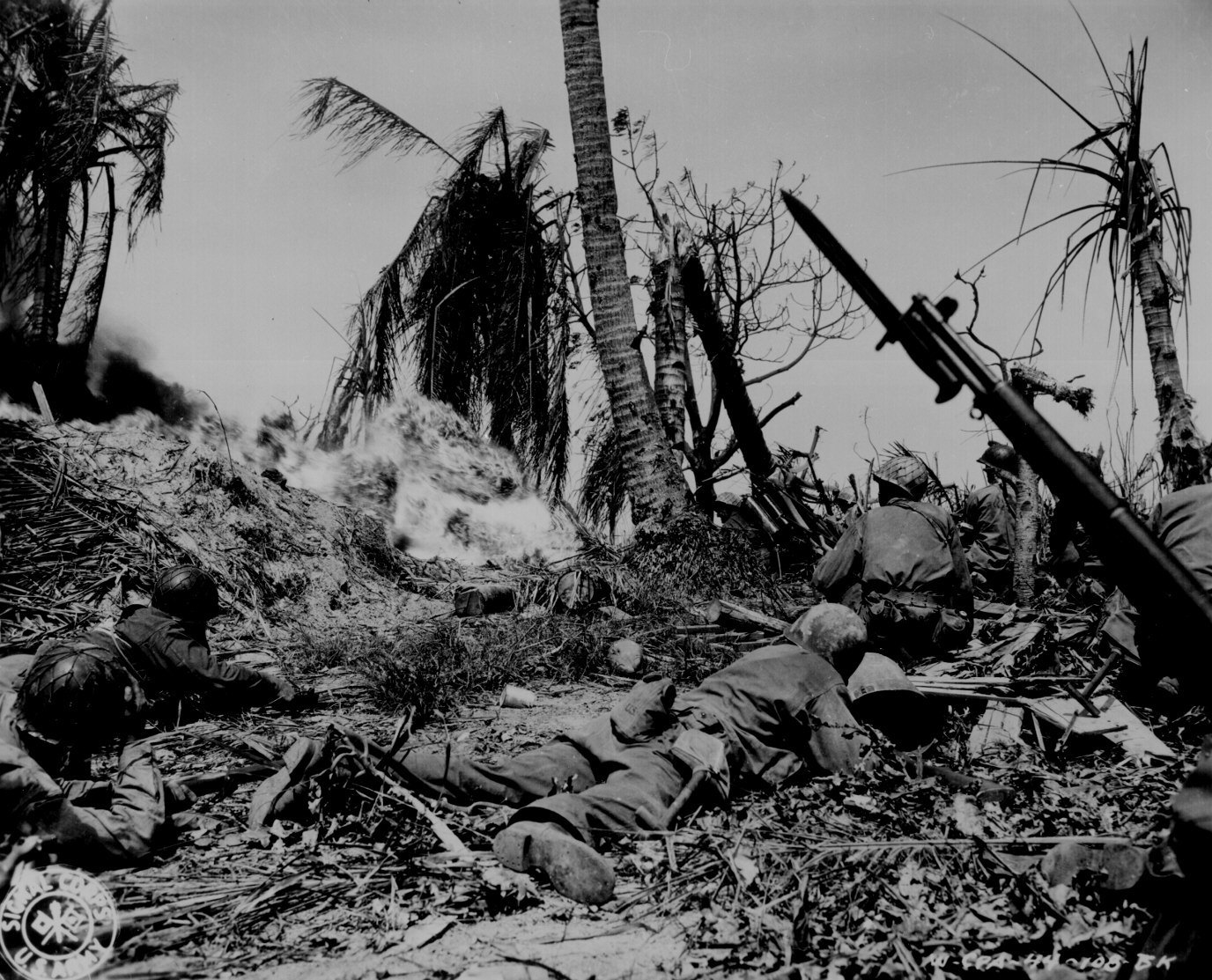While the campaign for the Philippines was still in progress, U.S. forces were making great steps in the direct advance toward their final objective, the Japanese homeland. Aerial bombardment was, of course, the prerequisite of the projected invasion of Japan--which was to begin, it was imagined, with landings on Kyushu, the southernmost of the major Japanese islands.
Iwo Jima and the bombing of Tokyo

With U.S. forces firmly established in the Mariana Islands, the steady long-range bombing of Japan by B-29s under the command of General Curtis E. LeMay continued throughout the closing months of 1944 and into 1945. But it was still 1,500 miles from Saipan to Tokyo, a long flight even for the B-29s. Strategic planners therefore fixed their attention on the little volcanic island of Iwo Jima in the Bonin Islands, which lay about halfway between the Marianas and Japan. If Iwo Jima could be eliminated as a Japanese base, the island could then be immensely valuable as a base for U.S. fighter planes defending the big bombers.
The Japanese were determined to hold Iwo Jima. As they had done on other Pacific islands, they had created underground defenses there, making the best possible use of natural caves and the rough, rocky terrain. The number of Japanese defenders on the island, under command of Lieutenant General Kuribayashi Tadamichi, was more than 20,000.Day after day before the actual landing the island was subjected to intense bombardment by naval guns, by rockets, and by air strikes using napalm bombs. But the results fell far short of expectations. The Japanese were so well protected that no amount of conventional bombing or shelling could knock them out. U.S. Marines landed on Iwo Jima on Feb. 19, 1945, and encountered an obstinate resistance. Meanwhile, kamikaze counterattacks from the air sank the light carrier Bismarck Sea and damaged other ships; and, though the U.S. flag was planted on Mount Suribachi on February 23, the isle was not finally secured until March 16. Iwo Jima had cost the lives of 6,000 Marines, as well as the lives of nearly all the Japanese defenders; but in the next five months more than 2,000 B-29 bombers were able to land on it.
Meanwhile, a new tactic had been found for the bombing of Japan from bases in the Marianas. Instead of high-altitude strikes in daylight, which had failed to do much damage to the industrial centers attacked, low-level strikes at night, using napalm firebombs, were tried, with startling success. The first, in the night of March 9-10, 1945, against Tokyo, destroyed about 25 percent of the city's buildings (most of them flimsily built of wood and plaster), killed more than 80,000 people, and made 1,000,000 homeless. This result indicated that Japan might be defeated without a massive invasion by ground troops, and so similar bombing raids on such major cities as Nagoya, Osaka, Kobe, Yokohama, and Toyama followed. Japan literally was being bombed out of the war.

